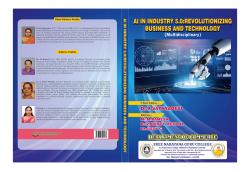QUANTIFICATION OF CYBERSECURITY RISK AND ECONOMIC IMPACT MODELING
Abstract
Cybersecurity risk quantification and economic impact modeling are vital tools in understanding and managing the threats a business faces today. These methods help organizations measure the potential loss from cyberattacks and see how these risks could affect their bottom line. By assigning numbers to the likelihood and possible damage of cyber threats, companies can make smarter decisions about where to spend their security budget. For example, if a company's data breach could cost millions in fines, lawsuits, and lost revenue, then investing more in security makes financial sense.
Economic impact modeling takes this a step further. It looks at how cyber incidents ripple through a company's finances, its supply chain, customer trust, and even regulatory fines. For instance, a ransomware attack that blocks access to critical systems could halt production lines or disrupt customer service, leading to lost sales and reputation damage. These models give a clear picture of total costs, including direct expenses like incident response and indirect effects such as brand damage that can last for months or even years.









